When I clicked on the story to read it, the headline was something about, How Long Would You Live On Each Planet, but it changed to something about the biggest planet afterwards. I was also wondering what happened to Uranus? It's not on here. Everything else is, the sun, moons of different planets, every other planet, and even dwarf planets, but not Uranus. I just wondered what the information was for Uranus and what happened?
Scientists Found the Largest Planet in the Universe
Jupiter is the largest planet in the Solar System. More than 1,300 Earths could fit inside this gas giant. It’s also two and a half times more massive than all the other planets of the Solar System — combined!
But if you think this is mind-boggling, I’ve got some great news for you! Very recently, a team of astronomers has discovered a much, much bigger planet with the help of the Subaru Telescope and the NASA Hubble Space Telescope.
It’s a Jupiter-like protoplanet orbiting a very young star called AB Aurigae. The star is probably still forming and is no more than 5 million years old.
For comparison, our Sun is 4.6 billion years old. The young star is located around 531 light-years away from Earth in the constellation of Auriga.
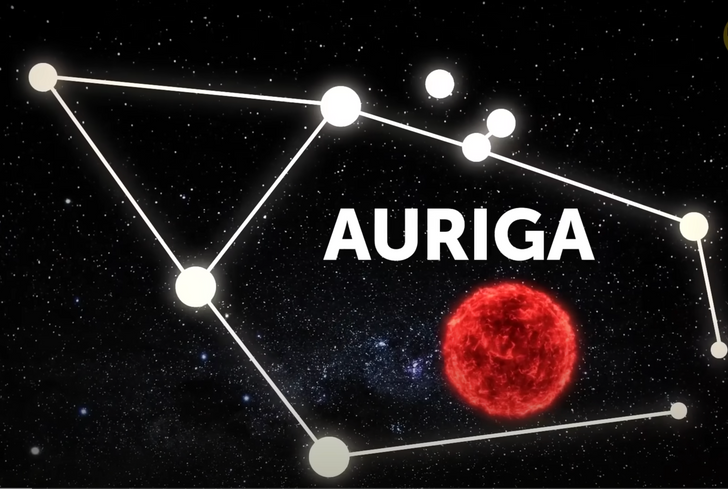
The star is shrouded in a thick quickly moving layer of gas and dust. This disk feeds the growth of the star. Later, what is left of this disk will come together to form the elements of the planetary system: planets, dwarf planets, comets, asteroids — you name it.
But back to the newly discovered planet. It’s a gas giant whose mass equals that of 9 Jupiters’! Can you imagine this colossus?!
It takes the planet — named AB Aurigae b — almost 588 Earth years to complete just one journey around its parent star. Maybe because it’s 93.9 AU (astronomical units) away from it.
Now, why is the discovery of this planet so amazing? Because according to astronomers, it’s been forming in a very bizarre way. Or should I say IS forming? Since this gas giant is still in the process!
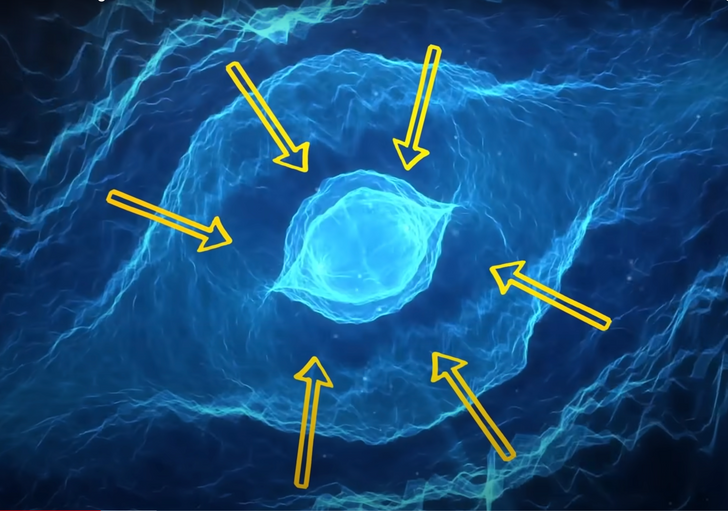
Anyway, the unusual thing is that AB Aurigae b is coming together as a result of a top-down gravitational collapse of giant clouds of gas. But scientists say that a much more common model of planetary formation is when dust and rocks gradually accumulate around some kind of core.
This proves the idea that there are numerous ways for planets to form. It can also mean that there probably are very diverse planetary systems in our home Milky Way Galaxy.
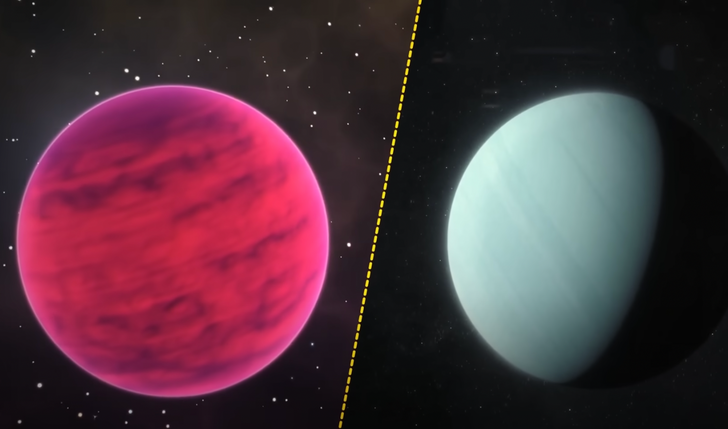
- But AB Aurigae b isn’t the largest exoplanet ever discovered. In 2005, astronomers spotted a mysterious space body. Later, they called it GQ Lupi b. The thing was orbiting a young star at a distance 2 and a half times greater than that between the Sun and Pluto.
Scientists came to the conclusion that the object was either a planet or a brown dwarf — which is basically a tiny star. If astronomers decide that GQ Lupi b is a planet, it will be the largest ever found — with a radius that is 3 and a half times that of Jupiter! - The biggest star we know about is called UY Scuti. This hypergiant has a radius that is about 1,700 times greater than that of the Sun! If you somehow managed to place UY Scuti in the center of the Solar System, its edges would stretch far beyond Jupiter’s orbit!
As for the dust and gas streaming from the star, all this would extend beyond the orbit of Pluto. That’s 400 times the Sun-Earth distance!
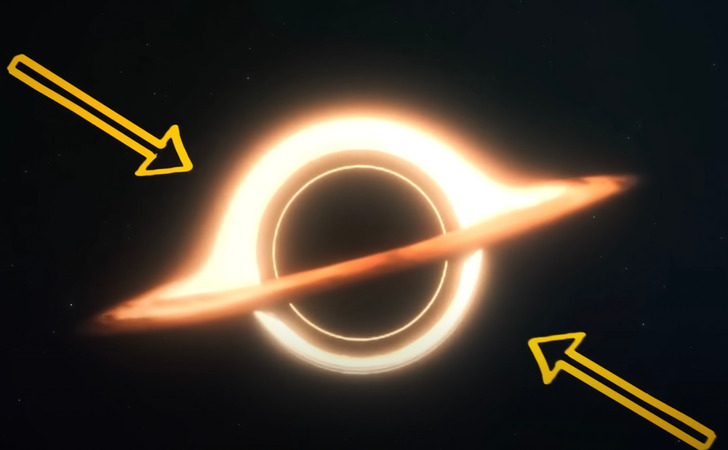
- A black hole is a spot in space where the pull of gravity is so strong that even light can’t escape it. But why is gravity so powerful there? Because matter is squeezed into a teeny-tiny space.
Supermassive black holes, which can be many millions of times the mass of the Sun, tend to lurk in the centers of galaxies. The most massive black hole astronomers have discovered so far is TON 618. Its mass is equal to that of 66 billion Suns! - It was the year 2010 when, with the help of the Fermi telescope, astronomers spotted ginormous... something entering the Milky Way. Their discovery looked like massive blobs of matter that could only be observed in particular wavelengths of light. They were also about 25,000 light-years tall! Scientists think that the blobs — called Fermi Bubbles — could be produced by our galaxy’s central black hole.
- Space seems to be extremely deserted. But some places are even emptier than the rest. Like Supervoid in Eridanus. Astronomers noticed this huge region of empty space in 2004. The area stretches 1.8 billion light-years across. It’s mysteriously devoid of gas, dust, stars, and even dark matter!
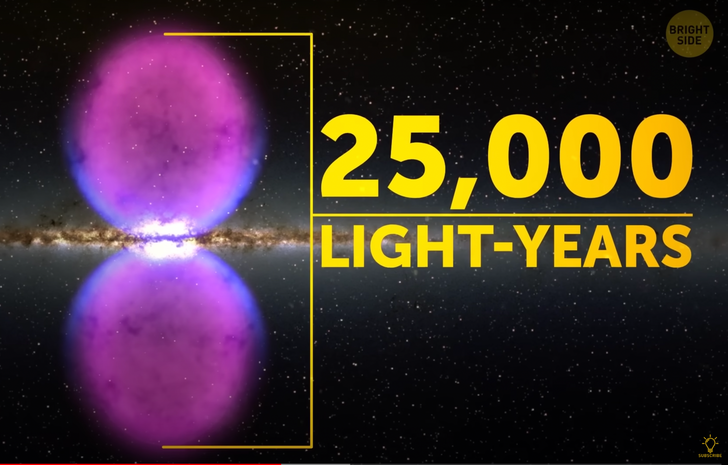
A nebula is a massive cloud of gas and dust floating in space. Some nebulae form when a star is nearing the end of its life and throws out loads of gas and dust. Others appear in regions where new stars are forming.
The largest nebula we know about is the Tarantula Nebula. In its longest span, it measures over 1,800 light-years. This nebula, also known as 30 Doradus, is located around 170,000 light-years away from Earth.
Unlike its namesake, the Tarantula isn’t dangerous. Quite the opposite — it’s a stellar nursery! Which means it’s a region where tons of young stars are born. Even cooler, it’s the most active star-forming area in our entire galactic neighborhood!
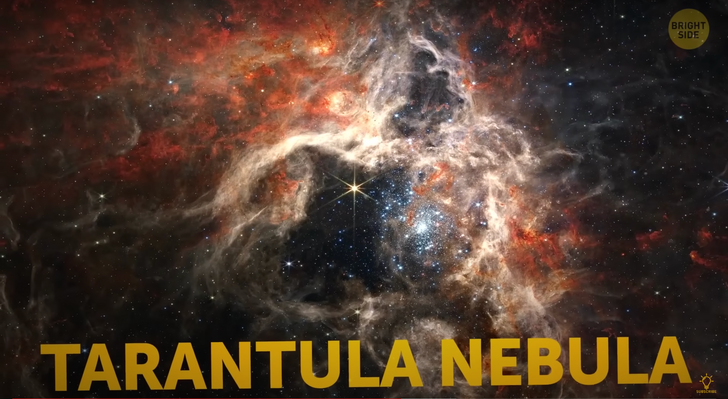
In 2021, the biggest-ever comet we know about entered our Solar System. It was 85 miles across, and its icy nucleus was 50 times greater than the nucleus of the previous record-breaker.
The intruder’s mass was a whopping 100,000 times bigger than that of an average comet. In fact, C/2014 UN271 (Bernardinelli-Bernstein) was so large that astronomers first classified it as a minor planet!
Is it going to crash into Earth? Nah! It won’t get closer than a billion miles to our beautiful green planet. And it won’t happen until 2031. But could there be comets even bigger than that? Who knows! But the thought is terrifying!
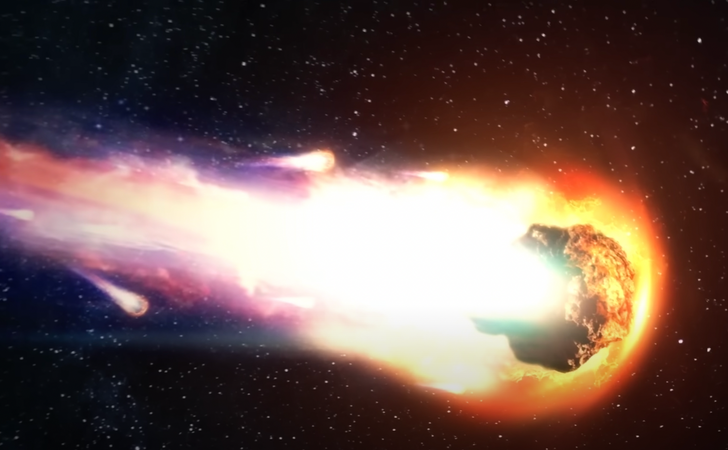
- There are loads of bizarre things in the Universe. And hypothetical nuclear pasta is one of them. If it does exist, nuclear pasta is the strongest material in the entire Universe. It forms from the leftovers of extinguished stars when this substance gets squeezed into spaghetti-like tangles of material. It can theoretically break, but only if you apply 10 billion times the pressure needed to shatter steel.
- Pulsars are spherical space objects the size of a large city. But they pack more mass than the entire Sun! They radiate two narrow beams of lights, sending them in opposite directions. The Black Widow Pulsar — just like its spider namesake — is munching on its partner. It’s a lightweight brown dwarf star. The more material the pulsar consumes, the more slowly it spins. The energy the neutron star is losing in the process causes its companion star to dwindle.
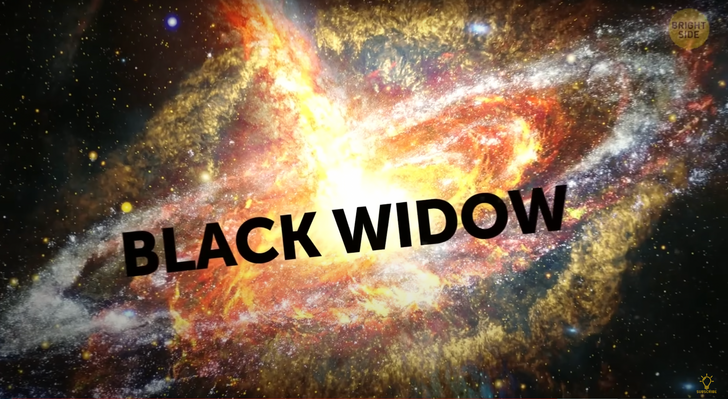
- Haumea is a dwarf planet orbiting in the Kuiper Belt — a donut-shaped ring of objects around the Sun that extends just beyond the orbit of Neptune. The mini-planet has a bizarre elongated shape and two moons. The day on this planet lasts just 4 hours, which makes it the fastest-spinning large object in the Solar System.
But the most mysterious thing about Haumea is that the planet has a thin 40-mile-wide ring circling it. What is it? Where did it come from? No one knows. Could be the result of a collision that happened in the distant past. - The eighteenth brightest star in the night sky, Fomalhaut, is a terrifying sight. It’s dubbed “the Eye of Sauron” because of a ring of dust and debris circling it — it makes the star look like a giant eye staring into your soul.
The intimidating star is more than twice the mass of the Sun. It’s 25 light-years away from Earth (which isn’t that far away, considering distances in space). - Look at this “butterfly” — its wingspan is more than 3 light-years! And the structure inside this nebula is one of the most complicated ever observed. The nebula’s central star, a white dwarf, is heated to an incredible 450,000˚F.
It means it was formed from another gargantuan star more than 5 times the size of the Sun. The white dwarf is surrounded by a thick disc of dust and gas at the equator. That’s what probably makes the whole structure look like an hourglass — or a butterfly.
Comments
Related Reads
Zac Efron’s Appearance a Few Days Ago Leaves Fans Shocked and Worried

Miley Cyrus Causes a Stir by “Leaving Nothing to the Imagination” as She Wears an Extremely Revealing Dress

Why I Refused to Give Up My Window Seat to a Mother With 2 Children

Model Lost Entire Lips in Pitbull Attack, And She Reflects on Her Recovering Journey

Sharon Stone, 65, Shares a Stunning Bikini Photo, But One Twist Completely Stole Her Thunder

Jennifer Lopez Sparks Controversy After Posting Candid Photos of Ben Affleck

«You Ain’t Got the Body to Pull It Off», Stunning Selena Gomez Deemed Too Big For Her Tight Dress

17 Designers Whose Work Will Attract the Wrong Kind of Attention

Jennifer Lopez Faces Backlash as Users Notice Something Unusual in Her Bikini Pics

A Detail Spotted on Salma Hayek’s Breasts Sparks Big Controversy, as She Celebrates 57th Birthday

Tom Cruise Deemed Unrecognizable in New Pics With Prince William, as Some Say He Had “Too Much Surgery”

Test: Find the Right Answer to 10+ Riddles as Fast as You Can
